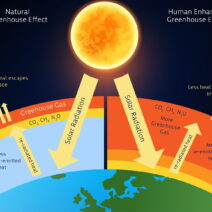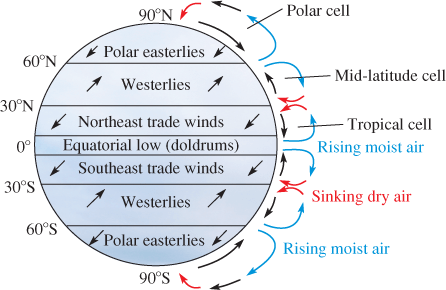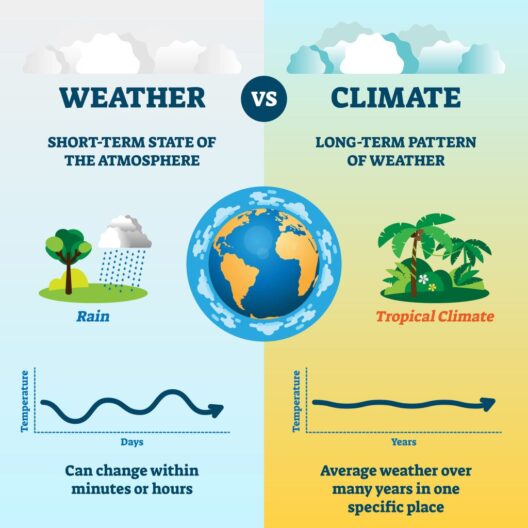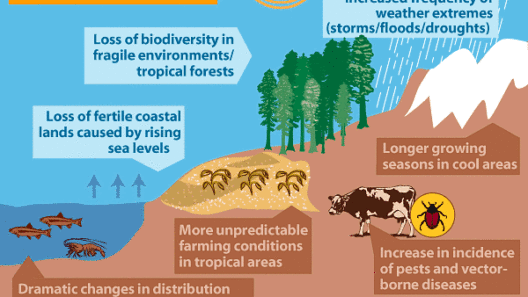Have you ever considered how the seemingly endless expanse of the ocean plays a pivotal role in shaping our planet’s climate? It’s easy to think of the ocean as just a vast body of water, but beneath its surface lies a complex system of currents that govern everything from weather patterns to climate extremes. In this exploration, we will delve deep into the mechanics of ocean currents and their profound influence on global climate systems.
To begin, ocean currents are essentially the continuous, directed movement of seawater generated by a variety of forces, including wind, water density differences, and the Earth’s rotation. They can be categorized primarily into two types: surface currents and deep-water currents. Surface currents are predominantly driven by wind patterns and can be observed in the upper 400 meters of the ocean. In contrast, deep-water currents, known as thermohaline circulation, are driven by variations in water density, which is influenced by temperature (thermo) and salinity (haline).
The intricate dance of these currents results in the global conveyor belt, a system of interconnected currents that circulate warm and cold water throughout the world’s oceans. This global conveyance plays a monumental role in regulating temperatures, as it redistributes heat from the equator toward the poles. For instance, the Gulf Stream, a powerful surface current in the North Atlantic, transports warm water from the Gulf of Mexico to the northeastern United States and Western Europe. As warm water is transported north, it releases heat into the atmosphere, significantly raising temperatures in these regions.
Yet, what would happen if this system were to falter? The potential consequences are alarming. A disruption in ocean currents may lead to catastrophic climatic shifts—longer winters, increased storms, and altered precipitation patterns, all detrimental to ecosystems and human life. Scientists warn of a possible slowdown of the Atlantic Meridional Overturning Circulation (AMOC), a critical component of the thermohaline circulation, due to climate change and the resultant influx of freshwater from melting ice sheets. This could spell trouble for millions, making us ponder: are we doing enough to safeguard our oceans?
Diving further into the mechanics, ocean currents also play a critical role in nutrient cycling. Upwelling zones, where deep, nutrient-rich waters rise to the surface, create some of the most productive marine ecosystems on the planet. These currents are vital for supporting fisheries which, in turn, sustain millions of livelihoods worldwide. As ocean temperatures rise due to climate change, the environments that support these upwelling zones may diminish, threatening biodiversity and food security.
A striking illustration of currents impacting climate can be found in the El Niño and La Niña phenomena. These events are characterized by a periodic warming (El Niño) and cooling (La Niña) of sea surface temperatures in the Pacific Ocean. Each phase disrupts normal weather patterns across the globe, causing droughts, floods, and even altering monsoon patterns in Asia. Such vast fluctuations highlight the ocean’s role as a climate influencer, raising questions about our preparation and adaptability in the face of changing climatic conditions.
Moreover, ocean currents also impact atmospheric conditions through their interaction with wind patterns. The exchange of heat and moisture between the ocean surface and the atmosphere is vital for climate regulation. For instance, warm ocean currents can intensify tropical storms and hurricanes, while cooler currents can contribute to more stabilized weather patterns. As the ocean continues to warm, the frequency and intensity of extreme weather events may increase, edging closer to a state of climate imbalance.
Considering the extensive implications of ocean currents, the desire to monitor and model these dynamics becomes imperative. Scientists employ sophisticated tools such as satellite imagery and buoys equipped with sensors to gather real-time data on ocean temperatures, currents, and salinity levels. This wealth of information aids in climate modeling, which is crucial for predicting future trends and informing policy decisions. Without these efforts, understanding the complex interplay between ocean currents and global climate would be akin to sailing in uncharted waters.
Lastly, the human element cannot be overlooked. Industrial activities, coastal development, and pollution have devastating effects on the ocean and its currents, leading to altered oceanic conditions. For example, plastic pollution disrupts not only marine life but also the currents themselves, which can exacerbate climate issues. It is vital for humanity to reassess its relationship with the ocean, adopting sustainable practices that mitigate damage and promote restoration.
In conclusion, ocean currents are not merely currents; they are lifelines that dictate the rhythm of our planet’s climate system. From regulating temperatures to supporting marine biodiversity, their importance cannot be overstated. However, the challenge remains: will we act with the urgency required to protect our oceans and, by extension, our climate? The answer to this question will determine not only the fate of marine ecosystems but also the very fabric of life on Earth. Throughout history, the ocean has shaped our climate; it is now time for us to shape our future thoughtfully and responsibly.




